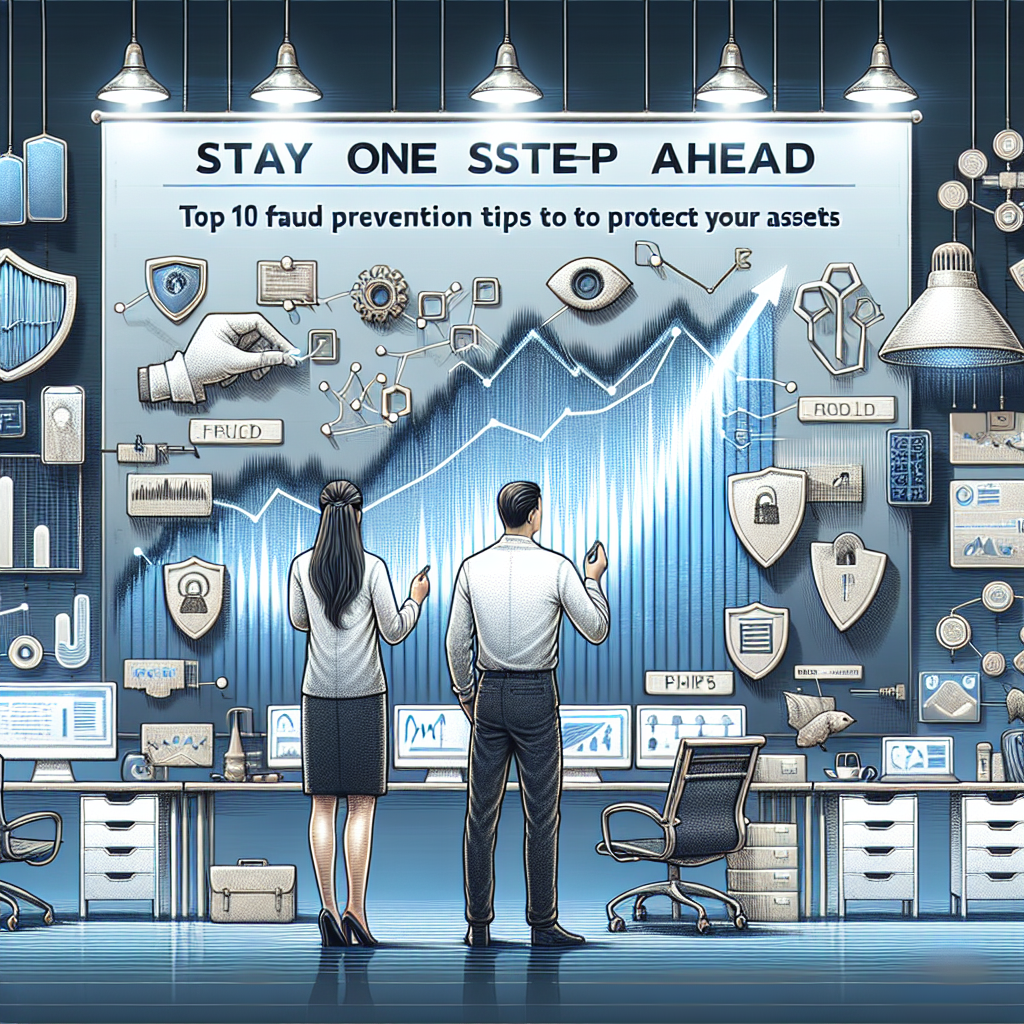Stay One Step Ahead: Top 10 Fraud Prevention Tips to Protect Your Assets
Top 10 Fraud Prevention Tips Everyone Should Know
Fraud is an ever-growing issue that transcends geographical boundaries and affects individuals, businesses, and institutions alike. In today’s digital age, where information is shared more readily than ever, understanding how to protect oneself against fraud is paramount. To help you stay secure, we’ve compiled a list of ten effective fraud prevention tips that are easy to implement and can make a significant difference in your safety and peace of mind.
1. Stay Informed
Knowledge is power when it comes to fraud prevention. Awareness of different types of fraud—such as phishing, identity theft, and credit card fraud—allows you to recognize potential threats. Subscribe to newsletters, follow reputable sources on social media, and participate in online forums to stay updated on the latest scams and prevention techniques.
2. Secure Your Personal Information
Protecting your personal information should be a top priority. When sharing personal details online, ensure that the website is secure (look for "https://" in the URL). Avoid sharing sensitive information, such as your Social Security number or banking details, unless absolutely necessary.
3. Use Strong Passwords
Creating strong passwords is essential in safeguarding your online accounts. Use a mix of upper and lower-case letters, numbers, and symbols. Avoid using easily guessable information, such as birthdays or simple sequential patterns. Additionally, change your passwords regularly, and consider using a password manager to keep track of them.
4. Enable Two-Factor Authentication (2FA)
Two-factor authentication adds an extra layer of security to your accounts. By requiring a second form of verification, such as a text message or an authentication app, it makes it much harder for fraudsters to gain access, even with your password. Implement 2FA on all accounts that offer it to further secure your information.
5. Monitor Your Financial Statements
Regularly review your bank and credit card statements for any unauthorized transactions. Report any suspicious activity immediately. Most banks offer alerts so you can stay apprised of account activity. This proactive approach can often help prevent long-term damage from identity theft or fraud.
6. Be Skeptical of Unsolicited Communications
Fraudsters often use unsolicited emails, texts, or calls to lure individuals into providing personal information or money. Always verify the identity of the contact by reaching out through official channels rather than responding directly to the communication. Remember, legitimate organizations will never ask you for sensitive information through insecure channels.
7. Protect Your Devices
Cybersecurity extends beyond your accounts; ensure that your devices are secure as well. Install reputable antivirus software and keep your operating system and software updated. These updates often contain fixes for vulnerabilities that fraudsters can exploit. Additionally, consider using a virtual private network (VPN) when accessing public Wi-Fi to enhance your privacy.
8. Practice Safe Online Shopping
Online shopping is convenient but comes with risks. Always shop from reputable websites and look for trust indicators, such as customer reviews and ratings. Avoid using public Wi-Fi for transactions and ensure the website is secure before entering payment information. A little caution can prevent significant loss.
9. Shred Personal Documents
In the physical world, identity thieves can gain access to your personal information through discarded documents. Invest in a shredder to dispose of sensitive materials, such as bank statements, tax documents, and credit card offers. This small effort can significantly reduce your risk of becoming a victim of fraud.
10. Educate Family and Friends
Spread awareness about fraud prevention within your community. Educate your family and friends about potential threats and share fraud prevention resources. An informed circle is a safer circle, and collective vigilance can help protect everyone from scams.
By integrating these tips into your daily routine, you can actively reduce the risks associated with fraud. For those looking for additional resources or ways to enhance their fraud prevention tactics, numerous platforms provide insights, tools, and preventive measures.
If you’re eager to learn more about protecting yourself from fraud and enhancing your security protocols, Click Here to learn more. It’s never too late to strengthen your defenses and ensure that you, your family, and your assets are safe from fraudulent activities.
Conclusion
Fraud prevention is an ongoing effort that requires vigilance, education, and proactive measures. By understanding the risks and implementing the right strategies, individuals can protect themselves against potential threats. With a blend of good practices and the right resources, you can confidently navigate the complex landscape of today’s digital world.
Remember, fraud can happen to anyone, but with the right information and tools at your disposal, you can effectively safeguard yourself and your loved ones. Stay alert, remain informed, and take control of your security!

